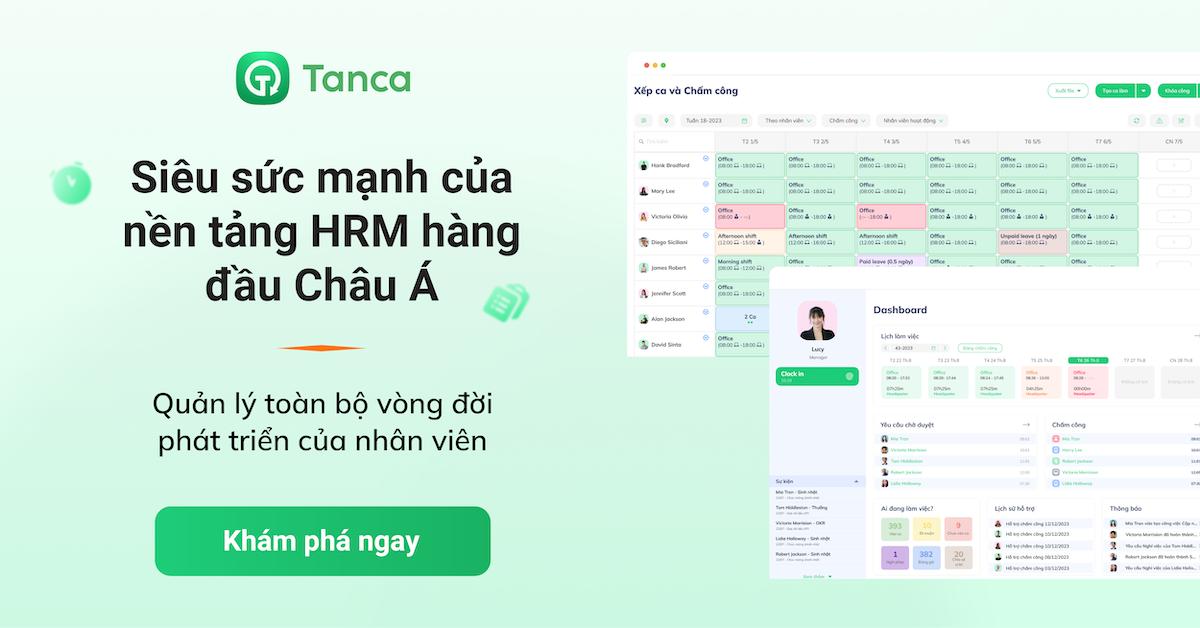What Is An Advantage Of Hiring Contingent Workers? Cost is the biggest advantage of hiring this type of worker. Keep reading to know more about the role of contingent workers, the pros and cons, and the difference between contingent workers and core employees.
Take a look now!
Overview: Why do companies hire contingent workers?

All types of businesses are constantly looking for ways to gain a competitive advantage. They are all looking for ways to gain an advantage over their competitors. Many businesses have begun to focus on how they create their personnel in recent years in order to get a competitive advantage.
Contingent labor have become a more important element of a company's objectives as technology and values have evolved.
The viability of remote work is improved by advancements in fields like unified communications as a service. Work-life balance is now being given more importance, which has also had an impact. It has increased the popularity of less traditional working partnerships.
According to 2021 data, there were about 67.6 million freelance employees in the United States. This number is expected to increase by more than 80 million people by 2027.
It also indicated over a million in the United Kingdom. Those figures have almost certainly climbed dramatically since then. Freelancers are also a subset of the contingent labor.
Accepting contingent workers could provide significant benefits to your company. We'll go over the key benefits of utilizing contingent labor. But let's make sure we all understand what the term "contingent laborers" actually implies before we go.
Read more: What Is The Difference Between Parttime And Fulltime?
Contingent workers meaning

A contingent worker is an individual who works for a company without being employed as an employee.
Contingent workers may offer their services on a permanent, temporary, or as-needed basis.
Instead of taking on an ongoing, unending burden like a permanent employee does, they are frequently recruited to finish a single project.
Contingent Worker Types
Independent contractors, freelancers, temporary workers, and other non-employee workers are examples of contingent workers. Because these wide definitions overlap significantly, the names are sometimes used interchangeably. Let's take a look at three of the most common.
Temporary Employees
Staffing firms identify potential employees and place them with businesses for a predetermined amount of time or throughout a busy season.
Many temporary workers like the freedom to choose the assignments they wish to work on without making a long-term commitment, even if some of these temporary employees may be employed permanently after completing their temporary job.
Since temporary workers are typically paid as workers of the recruiting firm that deploys them, they do not have the same obligations associated with self-employment as other categories of contingent workers.
Independent contractors
Independent contractors frequently provide services for many clients in a specific field. They usually work on a project basis, with an agreement outlining the work to be done.
To execute the work and finish it on their own schedule, they probably supply their own tools and equipment. They may even start their own business and employ others to do their work for them. The self-employment payroll taxes owed by independent contractors are their responsibility.
Freelancers
Freelancers often work for clients on a project basis. Employees in one organization may occasionally work as freelancers for others. For instance, a graphic designer can use their skills on their own time to help other businesses that don't require a full-time graphic designer.
Recently, internet-based organizations have begun to connect freelancers with enterprises in need of project completion. Freelancers are typically compensated as non-employees and must pay self-employment taxes.
Other Contingent Employees
Gig workers, outsourced workers, and consultants are other terminology for contingent workers. Any contingent worker's primary characteristics include the nature of the job connection (which is typically not one of an employee) and the longevity of the working relationship (temporary).
Read more: Benefits of Internal Recruiting
Contingent workers vs core employees
| Contingent workers | Core employees | |
| Time | Temporary (employed for one-time, seasonal, or short-term tasks) | For a few years |
| Payment | Lower payout rate | Higher payout rate |
| Benefits | Don't give retirement or medical benefits | Including retirement or medical benefits |
| Ability | Just complete the assigned task | Guided to complete the project |
What Is An Advantage Of Hiring Contingent Workers?

Reduce Cost
Cost is the most significant benefit of contingent workers. For many small businesses, using contingent workers makes financial sense.
When you hire a non-permanent employee for a project, you only pay them for the time they are needed. You come to an agreement on a price for the job you require, pay the agreed upon sum, and receive the worker's effort.
The financial benefits do not stop there. Firms can save money by using freelancers or contractors. Other than pay, there are several costs connected with full-time employees. They include things like insurance, paid time off, and pension payments. A company is not required to give these to contingent labor.
Quickly fill skill gaps
As your organization and technology grow, it becomes necessary to expand your hiring. However, hiring is more difficult to do than it is to say.
The procedure to fill a post takes more than a month to complete, or precisely 36–42 days, according to the SHRM research.
As a result, finding the proper talent takes time.
Hiring contingent workers, on the other hand, is a short process. Selection would be simpler if they had the necessary talent. Furthermore, you don't need to give it much thought over the long term.
Hiring is simpler and faster
Hiring for your company is frequently a complex procedure to solve a basic problem. To succeed, you must add talent and expertise to your organization.
Although it seems straightforward, doing so requires a lot of time and effort. Your new hire must first be found through a talent search, followed by an interview procedure.
When you hire a contingent worker, there is significantly less red tape. Contractors or freelancers with prior experience are frequently available on short notice.
You may track them down, negotiate a project with them, and then put them to work. Finding and hiring the ideal permanent employee requires far less time than that. Additionally, it is significantly less expensive than hiring a full-time employee.
Flexibility
The modern corporate climate is ever-changing. Small businesses must be adaptable and responsive to changing conditions.
That condition is perfectly met by the transient, short-term character of contingent work. Using contingent workers does not bind a company to a long-term, restrictive contract.
When necessary, a corporation might employ the contingent workforce as a resource. If there is an unexpected increase in work, a company can hire contingent workers to take up the slack.
If a particular project emerges, they will be able to locate a contractor with the necessary knowledge. Then, when a term of collaboration ends, the business's obligations to the freelancer end as well.
New Perspective
Collaborating with a contingent workforce gives you access to a bigger pool of individuals with specialized skills.
Typically, these knowledge employees have skills that are not available in-house. Engaging these individuals is an excellent method to fill organizational skill gaps. You can also find the experience you need through a contingent workforce if your employees lack it.
Finally, contingent workers add a new perspective to your company. This is due to their distinct skill set and their experience working with a variety of firms in various industries.
As a result, they can draw on a vast range of experiences. Core staff become accustomed to typical norms and processes, whereas a temporary worker sees things clearly and offers alternatives that improve efficiency and production.
Lower expenses
Your key staff would cost $4,129 on average to hire, according to a recent SHRM survey!
Hiring is an unavoidable component of every expanding organization. Choosing contingent labor for short-term and project-based assignments relieves you of financial responsibility.
Simply paying for the work that is completed, and only for the time that is necessary, eliminates the need to accommodate wasteful hours.
It does not end there. The extra benefits you provide to direct hiring are not available to contingent workers because they are not considered employees under your cader. You can save money on.
- Hikes.
- Insurance policies
- Profit-sharing schemes
- Paid time off.
- Pension contributions, for example.
- You eliminate additional costs and simply pay for what you actually receive.
The ability to experiment
Bringing in new innovations is a risky business. It involves money as well as a number of other dangers.
Hiring contingent labor allows you to try out different approaches. You can attempt with merely temporary arrangements, and if it doesn't work, it won't hurt you much. With them on board, it is easier to retract the proposal, which is the icing on the cake among other advantages.
Read more: How To Conduct HR Investigation?
The Disadvantages of a Contingent Workforce

It is uncommon for any company decision to be entirely positive. Choosing to use independent contractors is not an exception. Using non-permanent employees can provide certain difficulties.
If you choose contingent labor, you must overcome the five challenges listed below. The first step toward overcoming them is to completely comprehend what they are.
Manage Contingent Workforce
Contrary to popular belief, independent contractors are not your employees. This limits your ability to direct their work.
While you can set expectations, demand work, and monitor their progress, you have no influence over how long someone spends working on your project, how they choose to complete the assignment, or how they follow a step-by-step process.
In other words, you can specify what they must do but not how they must do it. You can't concentrate on the methods; just the outcome is allowed.
Dependability and trustworthiness
Onboarding a contingent worker takes much less time than onboarding a core employee. As convenient as that is, it also introduces the issue of trust.
A more expedited method may cause you to overlook the screening procedure. This can be a can of worms, as allowing in the incorrect individual can result in serious consequences.
Security threats
Despite the fact that they are temporary employees, they deal with your data and the intimate intricacies of your organization. It may also involve sensitive information at times.
As contrast to employing a core staff for the same job, this includes a risk. Even slight neglect might have major consequences, such as tarnishing your company's brand.
Team cohesion and culture
A contingent worker can be isolated by team dynamics. Because they will only be on your team for a short time, the bonding will be broken. This lack of coherence can have an impact on their production, causing a hiccup in the firm.
Additionally, teams that are primarily made up of contract employees will be disjointed, which will negatively impact business culture. This can have another negative impact on your reputation.
A scarcity of consistent talent
Contractors are free to set their own hours. Their working hours cannot be set, nor can you insist that they be accessible in times of emergency. As a result, they won't make a consistent or efficient contribution to your project.
Furthermore, you cannot rely on a temporary worker in the event of an emergency.
Unreliable Access to Talent
Using contingent employees to fill skill gaps is a viable option. It's one of the key benefits of project-based recruiting. However, there is an associated disadvantage. You could occasionally discover that you are unable to use the appropriate abilities at the appropriate time.
Consider the case where your company is faced with a specific difficulty on short notice. You can't be certain that you'll be able to locate and hire the ideal specialist in time if you rely on contingent workers. You wouldn't have that problem if you'd recruited a full-time employee with the necessary abilities.
Compliance and legality
Compared to direct hires, the employer's legal obligations to contingent workers are significantly less. However, based on the legislation, it becomes difficult to distinguish between them. The distinction between employees and contingent workers is a challenge for businesses.
The most common example is that of contractors. While some see them as temporary workers, others see them as a member of the contingent labor. Furthermore, each country's legal terms and classifications differ.
Misclassification might result in sanctions and legal complications. As a result, becoming a worldwide employer might be difficult.
How to Manage Contingent Workers?

The challenges, while massive, seem insurmountable. Now that we've seen what obstacles you can face, let's look at how you can deal with them.
Extensive screening
The first step in addressing the disadvantages of contingent workers is to select the appropriate workers. To discover dependable people, a thorough screening procedure must be in place.
Conduct a thorough background investigation and inquire about the persons from former employers. This allows you to sift through the vast number of candidates and select the best ones.
It is standard sense to conduct thorough research on potential contractors. Checking out testimonies is a great place to start.
If you're going to put a worker in a position of trust, you should think about conducting a background check. The majority of the problems associated with recruiting contingent labor are resolved by selecting the greatest fit.
Systematized Talent Acquisition
If you plan to use contingent labor, you must locate the best personnel for each project. A systematic strategy to sourcing talent is a logical first step.
Set up a structured approach for locating and hiring contingent labor. You might potentially delegate that task to a team member. It could also imply implementing specialist software to help with talent searches.
Participation and Integration
It is more difficult to foster camaraderie and involvement in a non-permanent workforce. This is especially true if you have remote-working contingent workers.
But if you do make an effort to integrate your non-permanent personnel better, you'll benefit from it. Make an effort to connect contingent and permanent employees.
Compliance
You must always follow the rules and regulations in your jurisdiction. When it comes to contingent labor, the rules can get a little complicated. As a first step, familiarize yourself with the appropriate legislation if you have never used such personnel previously. Then, make certain that you or someone in your organization stays up to date on all changes as they occur.
Frequently Asked Questions:
What is the importance of contingent workers?
Contingent workers are an important component of the workforce. On a temporary basis, they make their abilities and services available.
This group of workers consists of independent contractors, freelancers, consultants, and temporary employees who are often employed by contract to carry out a task or perform a job for a set period of time.
How do you motivate a contingent worker?
- Make a written job description.
- Introduce and orient.
- Respectfully treat them.
- Make the surroundings tough.
- Keep him informed.
- Consider a monetary completion bonus.
What is the difference between a contingent worker and a contractor?
An independent contractor is someone who is employed to do a specific work or tasks that are not under the authority of the hiring party. Workers who are hired on a temporary basis by a staffing agency, which typically keeps them on as "employees," are known as contingent workers.
Sum up: What are the advantages and disadvantages of using contingent workers?
After reading this post, you must know the advantages and disadvantages of using contingent workers. They have drawbacks but we can’t deny the pros when hiring them. When you plan for hiring, you need to consider the types of workers carefully to make sure the efficiency of the project.
Tanca is here to assist you in managing your contingent workforce. We are with you every step of the way to help you manage them efficiently.
We are aware of how challenging it can be to oversee the worldwide payroll and provide appropriate benefits based on the nature and level of employment. With just a few clicks, we provide a single platform for managing your benefits and payroll globally.
Tanca, in a word, provides holistic Human Resource Management Software in efficiently managing your various personnel within your budget. Contact us for more information. Thank you for reading!








